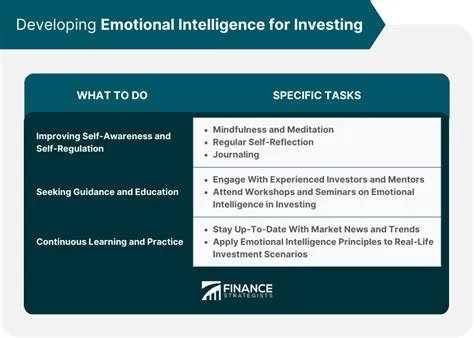Hey there, fellow investor! Ever felt that gut feeling when choosing a stock, that little voice whispering “buy” or “sell”? You’re not alone. micro-investing-risks">micro-investing-platforms">micro-investing-basics">micro-investing, with its low barriers to entry and the ease of apps like Acorns and Stash, has opened up the world of finance to millions. But it’s also introduced a whole new set of emotional challenges. We’re not just talking about cold, hard numbers here; emotions play a HUGE role in how we micro-invest. Let’s dive into eight key trends shaping this exciting and sometimes unpredictable landscape.
1. The Fear of Missing Out (FOMO): A Micro-Investing Epidemic
Remember the last time you saw a friend post about a stock that skyrocketed? That pang of regret? That’s FOMO in action. Micro-investing, with its constant stream of information and easily accessible trading, amplifies this feeling. We’re bombarded with stories of overnight riches, and it’s tempting to jump on the bandwagon without doing proper research. It’s like watching everyone else eat delicious cake while you’re stuck with a stale cracker – nobody wants to miss out on the sweetness! But remember, FOMO often leads to impulsive decisions, and impulsive decisions rarely lead to smart investments.
2. Confirmation Bias: Seeing What You Want to See
We all have a tendency to favor information that confirms our existing beliefs, even if that information is flawed. This is confirmation bias, and it’s a significant factor in micro-investing. If you’ve already invested in a particular company, you might be more likely to seek out positive news and ignore the red flags. It’s like wearing rose-tinted glasses – they make everything look pretty, but you might miss some important details! Try to be objective and consider all sides of the story before making a decision.
3. Herd Mentality: Following the Crowd (Blindly)
Have you ever bought something simply because everyone else was buying it? That’s herd mentality, and it’s a powerful force in the stock market. With micro-investing, it’s easy to get caught up in the hype and follow the crowd blindly. Suddenly, everyone’s investing in meme stocks, and you feel the pressure to join in, even if you don’t fully understand the risks. Remember, independent thinking is crucial in investing. Don’t be a sheep; be a wolf!
4. The “Shiny Object” Syndrome: Chasing the Next Big Thing
The world of micro-investing is full of shiny new investment opportunities. A new cryptocurrency-micro-investing">cryptocurrency-coins-tokens">cryptocurrency-basics">cryptocurrency emerges, a promising startup goes public – it’s tempting to chase every exciting new thing that comes along. But this “shiny object” syndrome can lead to scattered investments and a lack of focus. Think of it like a kid in a candy store – overwhelmed by choice and prone to grabbing whatever looks the most appealing, even if it’s not the most nutritious. Instead, focus on a well-defined investment strategy and stick to it.
5. Overconfidence Bias: Thinking You Know More Than You Do
Micro-investing apps often make trading incredibly easy, and this can lead to overconfidence. You might start thinking you’re a financial genius after a couple of successful trades. But remember, the market is unpredictable, and even seasoned professionals make mistakes. Overconfidence can lead to risky investments and significant losses. Humility is your friend in the world of finance – never stop learning and always remain cautious.
6. Loss Aversion: The Pain of Losing Is Greater Than the Joy of Winning
Loss aversion is a powerful psychological bias that makes us feel the pain of a loss more strongly than the pleasure of an equivalent gain. This can lead to holding onto losing investments for too long, hoping they’ll eventually recover, or avoiding investments altogether out of fear of losing money. It’s like clutching onto a burning piece of paper – the pain of letting go seems far worse than the pain of the burn itself. Develop a disciplined approach to managing your portfolio and don’t let emotions dictate your actions.
7. Anchoring Bias: Sticking to Your First Impression
The first piece of information we receive about an investment can heavily influence our decisions, even if that information is outdated or irrelevant. This is anchoring bias. For example, if you first heard about a company when its stock was much higher, you might be reluctant to buy it even if it’s now undervalued. It’s like getting stuck on the first number you hear in a negotiation – it sets the tone, even if it’s arbitrary. Try to approach every investment with fresh eyes and unbiased research.
8. Cognitive Dissonance: Justifying Your Decisions (Even the Bad Ones)
We all want to feel consistent in our actions and beliefs. When we make a bad investment, cognitive dissonance kicks in, making us justify our decision even if it’s clearly wrong. This prevents us from learning from our mistakes and making better choices in the future. It’s like trying to fit a square peg into a round hole – you know it won’t work, but you keep forcing it anyway. Instead, embrace your mistakes as learning opportunities and adjust your approach accordingly.
Conclusion
Micro-investing offers an exciting and accessible entry point to the world of finance, but it’s crucial to understand the emotional factors at play. By recognizing and managing these biases, we can make more rational investment decisions and achieve our financial goals. It’s a journey, not a sprint, so be patient, learn from your experiences (both good and bad!), and remember that investing should be a thoughtful and informed process, not an emotional rollercoaster. Happy investing!
FAQs
1. Q: How can I overcome FOMO in micro-investing? A: Develop a well-defined investment strategy based on your financial goals and risk tolerance. Stick to your plan and avoid impulsive decisions based on social media hype.
2. Q: What strategies can I use to minimize confirmation bias? A: Actively seek out opposing viewpoints and information. Challenge your assumptions and consider alternative perspectives before making an investment decision.
3. Q: How can I avoid herd mentality when micro-investing? A: Conduct your own thorough research before making any investment decisions. Don’t just follow the crowd; develop your own independent judgment.
4. Q: How do I manage loss aversion effectively? A: Develop a well-diversified portfolio and stick to your investment strategy, regardless of short-term market fluctuations. Remember that losses are a part of investing; they are learning opportunities.
5. Q: What techniques can I use to reduce cognitive dissonance in my investment decisions? A: Regularly review your investment portfolio and honestly assess your successes and failures. Don’t be afraid to admit mistakes and learn from them.

